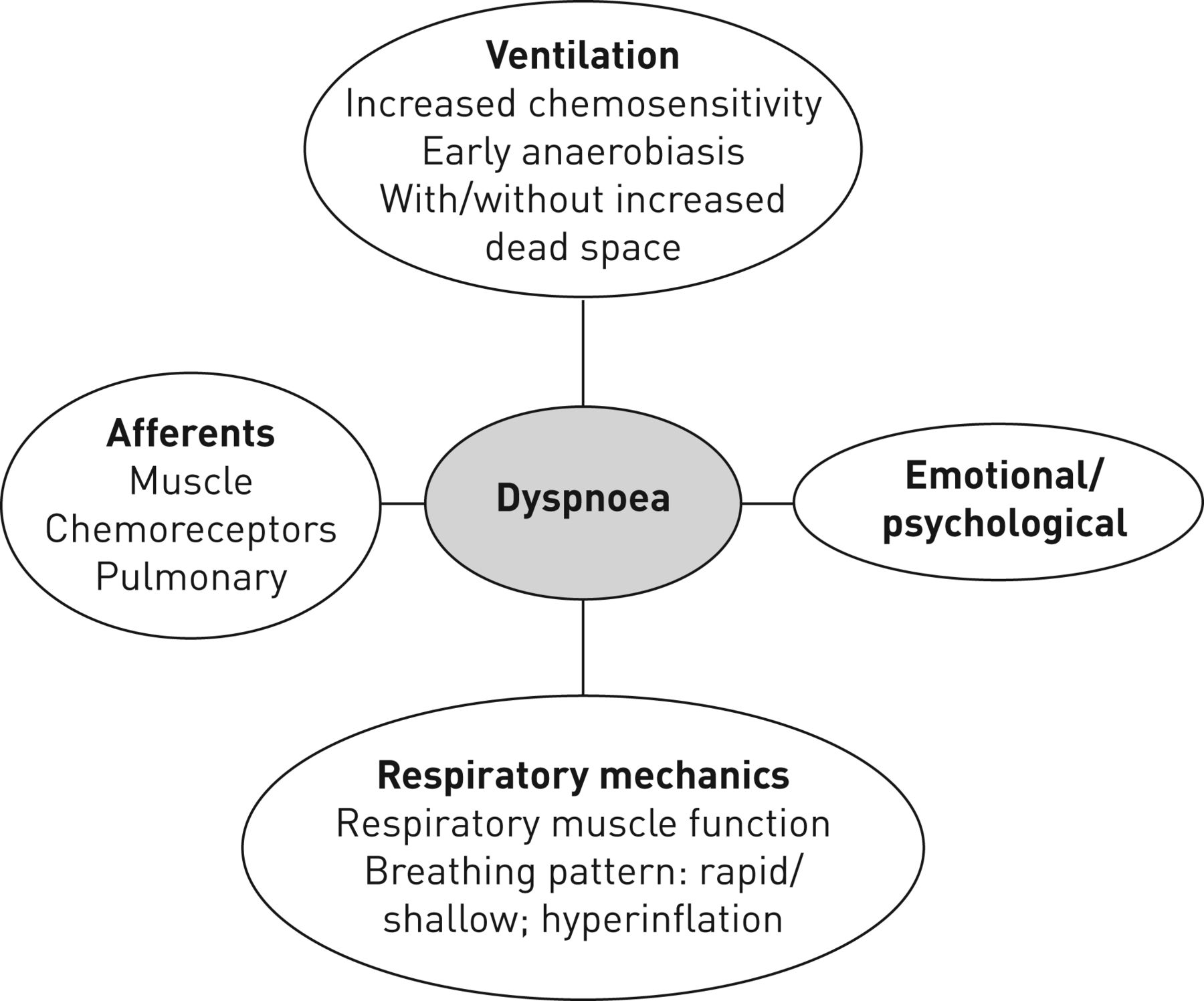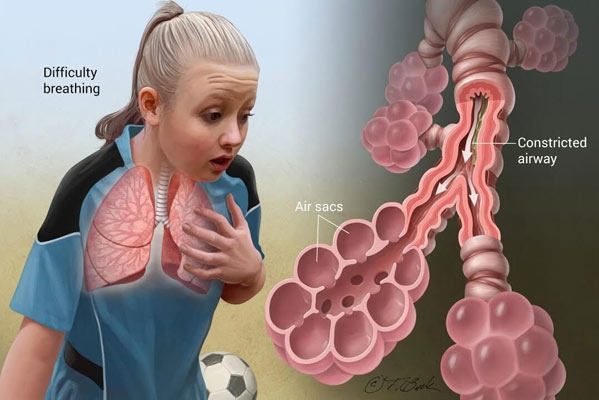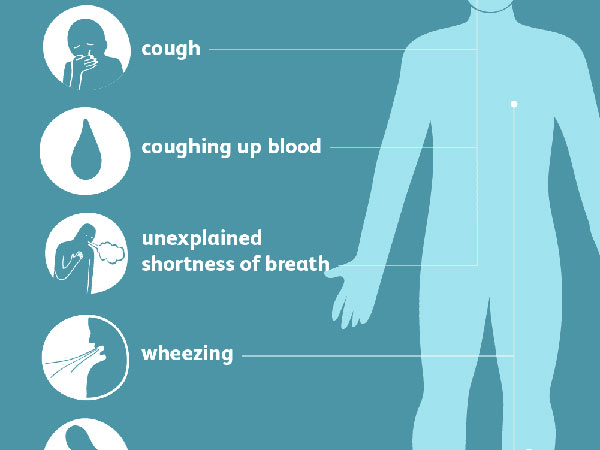Respiratory disorders usually manifest with the following symptoms, when they present you should seek the help of a pulmonologist.
DYSPNOEA
Depending on the duration of the symptoms, dyspnoea is distinguished as acute or chronic. Depending on the physical effort that is required to cause/ trigger the symptom this could be identified as dyspnoea at rest or at exertion. Other types of dyspnoea are paroxysmal nocturnal dyspnoea (breathing that occurs during sleep) and orthopnoea, in which the patient is raised from his bed with an intense feeling of lack of air.
Any other patient with dyspnoea may experience other symptoms such as tachycardia, tachypnoea, cyanosis and fever. During the clinical examination, it is possible to observe a decrease in the mobility of one hemi-thorax, the use secondary breathing muscles and wheezing.
Causes of dyspnoea
• ALL CONDITIONS OF THE RESPIRATORY SYSTEM and heart diseases (heart failure, infarction)
• Of other systems (anemia, hyperthyroidism, obesity, upper airways obstruction)
• Or psychogenic (panic attack).
In any case, the patient should undergo complete clinical and laboratory testing including medical history, clinical examination, chest X-ray, spirometry and other specific test that the physician will deem necessary.

COUGH
Cough is the intense and violent expiratory effort aimed at removing secretions, harmful substances and foreign bodies from the lungs. Cough is characterized as dry or productive when accompanied by sputum discharge and as acute or chronic when it lasts more than 3 weeks.
Causes
• Viral and microbial infections of the upper and lower respiratory tract
• Asthma - Chronic Obstructive Pulmonary Disease (COPD)
• Interstitial lung diseases. Pulmonary fibrosis, sarcoidosis
• Foreign body in the bronchial tree
• Lung Cancer
• Gastroesophageal reflux.
• Congestive heart failure - valvular disease
• Drug side effects
• Psychogenic cough
HEMOPTYSIS
Hemoptysis is the expectoration of blood with coughing. The blood may be red (vivid or dark) or sputum with blood. Usually the amount of blood is small, but there are cases where hemoptysis is large and life-threatening. When someone observes haemoptysis he/she should seek immediate medical attention.
The most common causes of haemoptysis are:
Chronic bronchitis (smokers)
Infections
Bronchiectasis
Taking anticoagulants
Less common causes are
Cardiovascular diseases: mitral stenosis
Pulmonary embolism
Blood clotting disorders
Tuberculosis
Lung Cancer
Autoimmune diseases
Use of narcotic drugs
WHEEZING
It is the result of the forced passage of air through narrowed airways into the lungs. A sound described by the patient as a wheezing.
What can cause wheezing:
Asthma
Chronic Obstructive Pulmonary Disease (COPD)
Chronic or acute bronchitis
Allergies
Foreign body in the bronchi
Lung cancer
High airway obstruction
Heart Failure (Cardiac Asthma)

EXPECTORATION
Expectoration is a mixture of secretions from the tracheobronchial tree that is excreted with a cough. Normally, a small amount of mucus (sputum) is produced daily to remove harmful substances and particles from the bronchial tree without causing cough. In the case of an infection or inflammation of the bronchi, a large amount of sputum is produced which is removed by coughing. Sputum is characterized by the consistency, which can be foamy, watery, mucous and pussy, depending on their color white, yellowish, green, brown, and depending on their quantity and duration.
Common causes of expectoration:
• Chronic Obstructive Pulmonary Disease (COPD)
• Asthma
• Upper and lower respiratory infections
• Bronchiectasis
• Cancer
CHEST PAIN
Chest pain is divided into two major categories. One is not affected by respiratory movements and is permanent and the other is affected by respiratory movements, and in particular by deep inhalation, i.e intermittent. In the first category are the pain of infarction, pneumothorax, lung cancer, pleural effusion. Intermittent pain is a characteristic of pulmonary embolism, inflammation of the pleura (mainly in infections), chest wall injuries and other more rare conditions.




